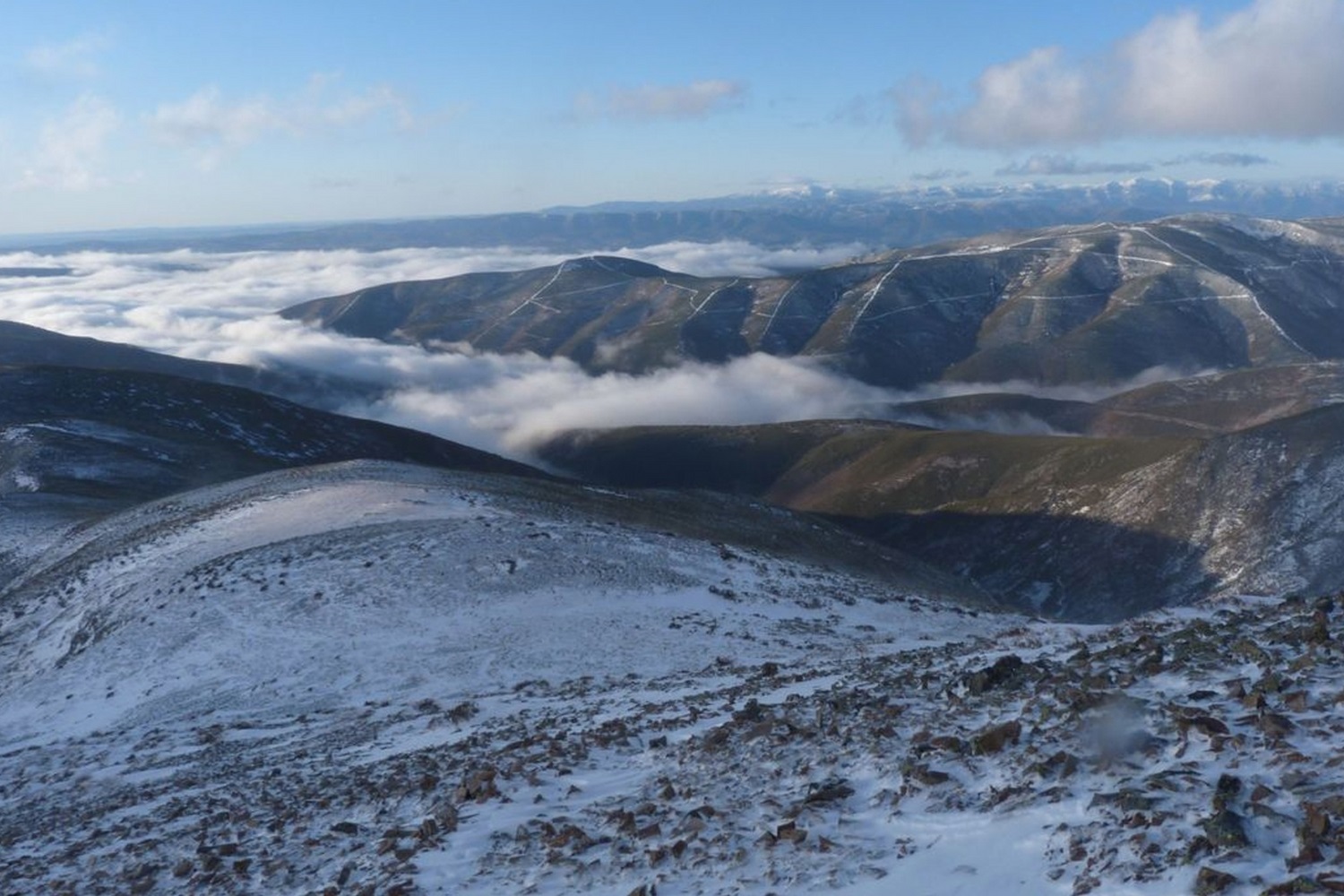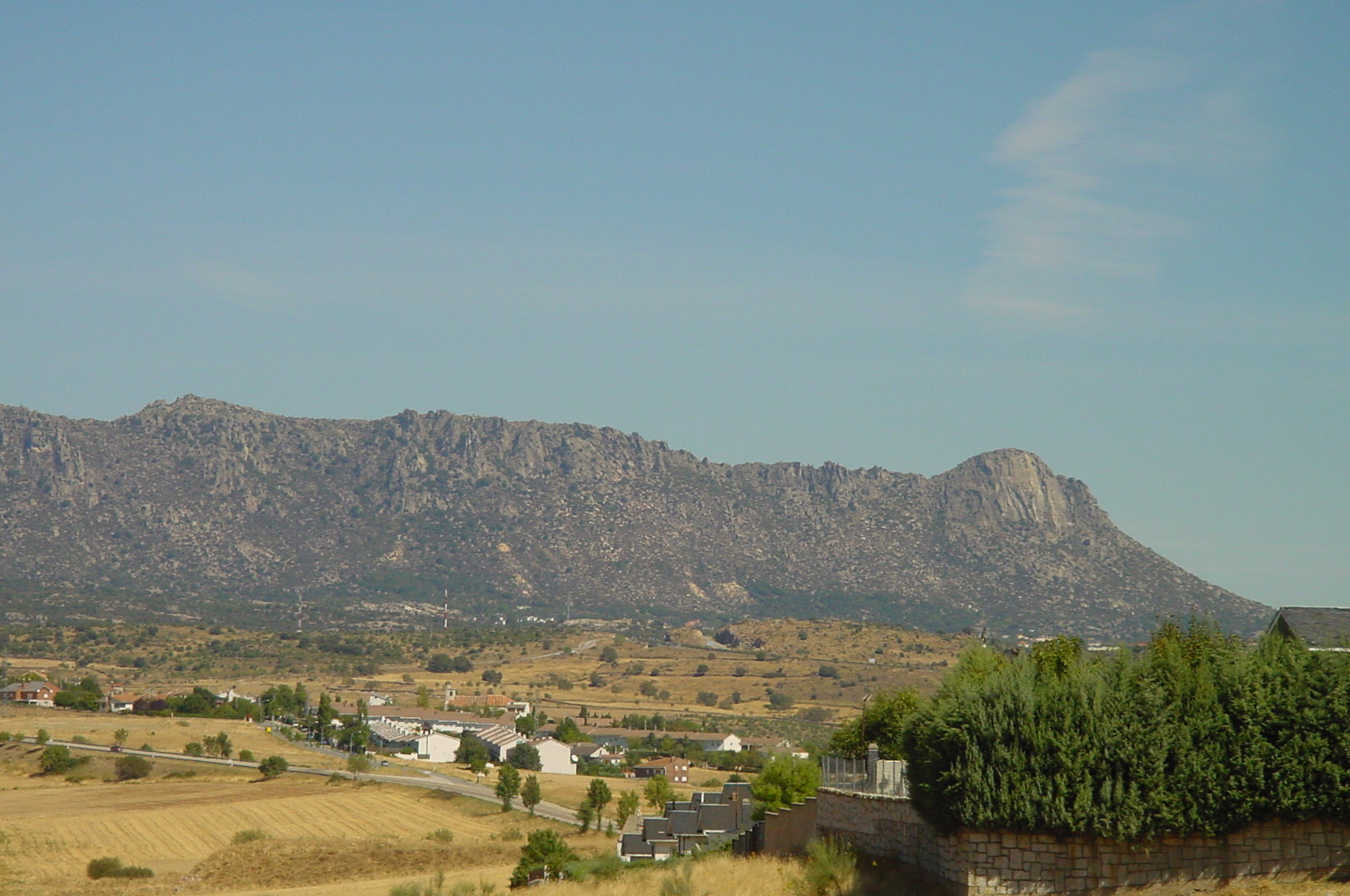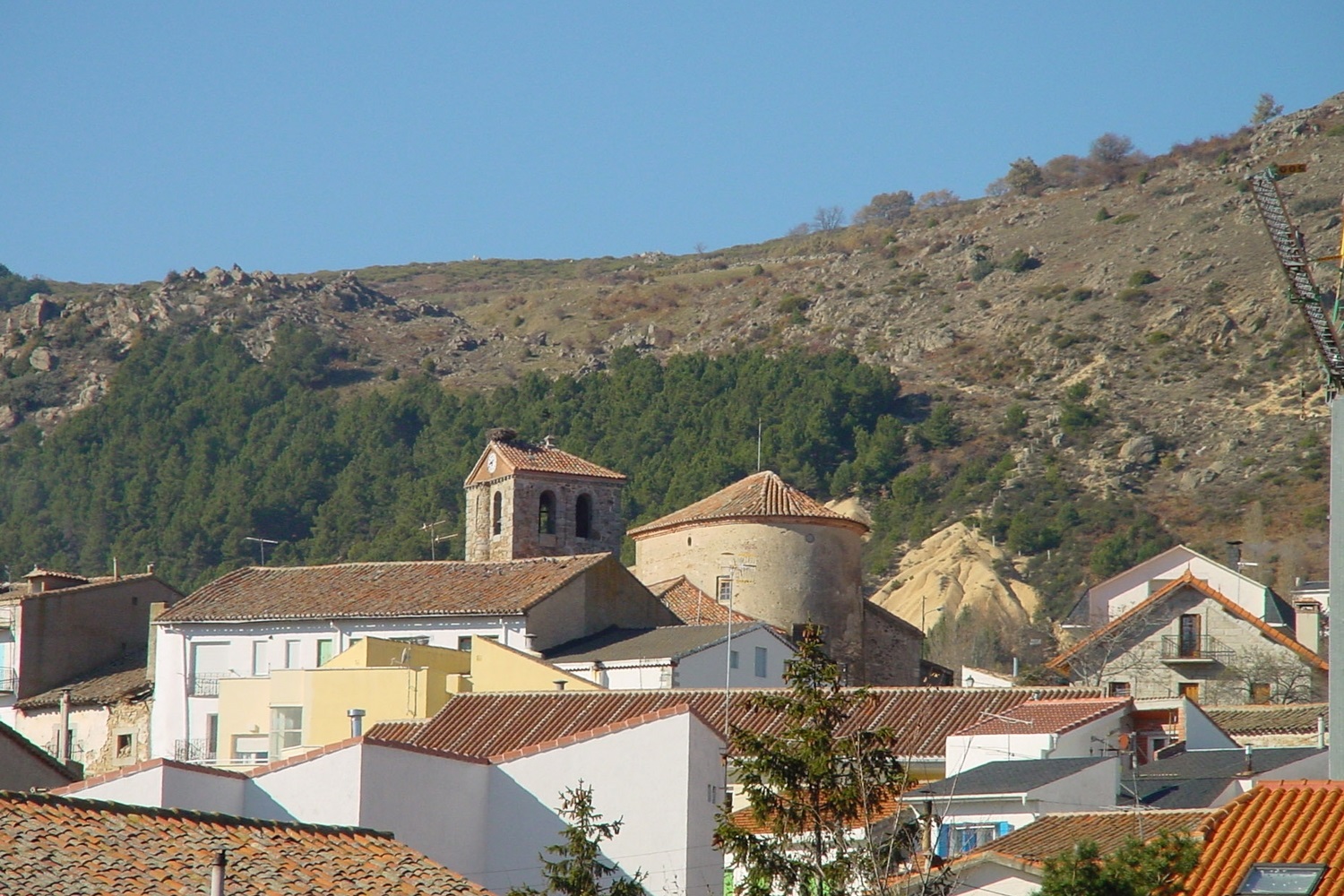
- Discover Madrid
- To see and do
- For you
- Accommodation
- Plan your Trip
- Professionals

Things to do in madrid
iconic places in madrid
Itineraries in Madrid
sights in madrid
top attractions in madrid
museums in Madrid
Tourism in Madrid

This rocky spur in the Cuerda Larga sub-range (one of the most important stretches in the Sierra de Guadarrama Mountains) includes the largest granite massif in the eastern part of these mountains. It is situated to the north of the municipality of the same name and to the east of Valdemanco, accessible via motorway A-1 (Madrid-Burgos) at kilometre 60.
Referred to as a mountain-island because it seems to be separated from the primary alignment, the main peaks are Gancho Gordo at 1564 metres and Pico de la Miel,which is a must-see at 1392 metres. The total length of the spur is four kilometres.

Given the easy access, you can discover the seven municipalities that surround this bluff: Bustarviejo, Cabanillas de la Sierra, La Cabrera, Lozoyuela-Navas-Sieteiglesias, Navalafuente, Valdemanco and Venturada, where the major livestock breeding tradition combines with the rural landscapes, public meadows, fenced-in fields, livestock crushes, cattle routes and, of course, trails and pathways.
Historicalally, it's been a passageway for travellers as it's on the old France road which is quite obvious given the inns and hostelries that date back to those years when travelling was quite the adventure.
If you're arriving from Madrid heading north, you'll first see the Sierra Norte right as you come up against the Sierra de la Cabrera. Standing out as the main claims to fame of all the municipalities comprising this sub-region are the colours of the plant cover and the diverse rocky shapes.
The doors open starting in the municipality of Venturada where all those who come are invited to discover the Sierra Norte region. Situated in a natural vantage point, you can see almost all of the Guadix River basin and the Torrelaguna meadows. We recommend a visit to the city to take in its historical and artistic heritage, popular architecture, fountains, drinking troughs, mining deposits, the Parish Church of Santiago and, of course, the vantage point (Atalaya), which was declared a Monument of Historical/Artistic importance by Spanish Royal Decree in 1983.
Some of its most important festivals and traditions include San Isidro, San Juan Bautista and Virgen de la Antigua.
Next, you'll reach Cabanillas de la Sierra and Navalafuente in the lowest and flattest areas with beautiful Pyrenean oak tree meadows.
Cabanillas is known for its origins, which are connected to the name for this municipality as it was initially a settlement area for shepherds who built cabins here. Livestock is highly important as can be seen by the three drover's roads crossing the town named Real de Extremadura, Sacedón al Portillo and Venturada. The historical and artistic heritage includes an old school, the parish church of San Juan Bautista and the Town Hall. If you like traditions, don't miss the May Uprising, the Feast of Corpus Christi, the Summer Festival and the Feast of the Immaculate Conception.
We shall continue our trip towards Navalafuente, which gained independence from Bustarviejo in 1734. Here you'll see a crush, where livestock was branded in the square Plaza San Bartolomé, and the parish church of the same name. As far as festivals and traditions, there's the Epiphany, Carnival, the festival of San Blas and, of course, the festival of San Bartolomé.
Next up on this journey to the northern trail, we'll reach the highest elevations in the Sierra de la Cabrera range. This is where we'll find the towns of Bustarviejo, Valdemanco and La Cabrera, which are the most mountainous in this sub-region.
Bustarviejo, comes from the Latin word bustar, which means a meadow or pasture for oxen; in this case, it's quite old. One relevant historical event was its independence from Segovia in 1626. Some of its most important historical and artistic heritage includes the Torre de la Mina tower and the hermitage Ermita de la Soledad. As for its festivals and traditions, San Isidro and Cristo de los Remedios are important dates.

Juan Valdés, a 16th century resident of Bustarviejo, known as "the one-armed man", built a hostelry some five kilometres from his village. After marrying, his daughters built their houses around their father's and that is why, according to legend, the town was called Valdemanco. It was initially dependent on Bustarviejo until the Kingdom of Spain granted its independence in 1840. From that time until the second quarter of the 20th century, it was a farming and livestock community. However, the granite business rose when a stopping place was created in the town with the construction of the Madrid-Burgos railway. Some of the most outstanding architecture can be seen in the Parish Church of Our Lady of Carmen, the Luis Berruti Museum Workshop and the crush, which is very typical of this area. Its most important festivals and traditions include the festival of Our Lady of Carmen and San Roque.
La Cabrera, became a Villa in 1784, suffered from devastation and was destroyed by the French during the invasion but was re-built in 1809. The main industries are livestock breeding and rural tourism. A large number of cottages and restaurants have been established for this purpose. The main sites of interest in the municipality are the crush and the Villa de San Roque Tourism Innovation Centre with a botanical garden and temporary exhibits. The multimedia room is also used for training conferences and courses. Also noteworthy are the Parish Church of the Immaculate Conception and the Cardinal Gonzaga Regional Humanities Centre. San Antonio and San Lucas are its two most important festivals and traditions.
At more than 1500 metres in altitude, we'll finally reach the highest point, Lozoyuela-Navas-Sieteiglesias, which contrasts with a flat and mountainous landscape with granite formations and extensive livestock meadows. Its origins also date back to medieval times as can be seen in the Blanquilla Fountain which is the work of two Lozoya residents during the Reconquista. Its historical and artistic heritage includes the parish church of San Pedro Apóstol, the parish church of Santa Cruz, the Medieval Christian Necropolis, the Velasco Museum Pond, the hermitage Ermita de la Virgen de la Soledad and the parish church of San Nicolás de Bari. Its primary traditions and festivals include Cruz de Mayo, San Blas, San Nicolás de Bari and La Virgen de la Soledad.
There are an endless number of routes and trails through the Sierra de La Cabrera which adapt to all types of tourists and difficulty levels, so we recommend visiting some specific sites to get more information about the routes that best fit your needs.
More information: Sierra Norte de Madrid